Related Research Articles
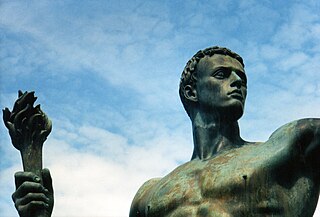
Aryanism is an ideology of racial supremacy which views the supposed Aryan race as a distinct and superior racial group which is entitled to rule the rest of humanity. Initially promoted by racist theorists such as Arthur de Gobineau and Houston Stewart Chamberlain, Aryanism reached its peak of influence in Nazi Germany. In the 1930s and 40s, the regime applied the ideology with full force, sparking World War II with the 1939 invasion of Poland in pursuit of Lebensraum, or living space, for the Aryan people. The racial policies which were implemented by the Nazis during the 1930s came to a head during their conquest of Europe and the Soviet Union, culminating in the industrial mass murder of six million Jews and eleven million other victims in what is now known as the Holocaust.
The Nordic race was a racial concept which originated in 19th-century anthropology. It was considered a race or one of the putative sub-races into which some late-19th to mid-20th century anthropologists divided the Caucasian race, claiming that its ancestral homelands were Northwestern and Northern Europe, particularly to populations such as Anglo-Saxons, Germanic peoples, Balts, Baltic Finns, Northern French, and certain Celts and Slavs. The supposed physical traits of the Nordics included light eyes, light skin, tall stature, and dolichocephalic skull; their psychological traits were deemed to be truthfulness, equitability, a competitive spirit, naivete, reservedness, and individualism. In the early 20th century, the belief that the Nordic race constituted the superior branch of the Caucasian race gave rise to the ideology of Nordicism.
Nordicism is an ideology which views the historical race concept of the "Nordic race" as an endangered and superior racial group. Some notable and seminal Nordicist works include Madison Grant's book The Passing of the Great Race (1916); Arthur de Gobineau's An Essay on the Inequality of the Human Races (1853); the various writings of Lothrop Stoddard; Houston Stewart Chamberlain's The Foundations of the Nineteenth Century (1899); and, to a lesser extent, William Z. Ripley’s The Races of Europe (1899). The ideology became popular in the late-19th and 20th centuries in Germanic-speaking Europe, Northwestern Europe, Central Europe, and Northern Europe, as well as in North America and Australia.

Patrick Cabanel is a French historian, director of studies at the École pratique des hautes études and holder of the chair in Histoire et sociologie des protestantismes. He mainly writes on the history of religious minorities, the construction of a secularised French Republic and French resistance to the Shoah.
The Nazi Party of Germany adopted and developed several pseudoscientific racial classifications as part of its ideology (Nazism) in order to justify the genocide of groups of people which it deemed racially inferior. The Nazis considered the putative "Aryan race" a superior "master race", and they considered black people, mixed-race people, Slavs, Roma, Jews and other ethnicities racially inferior "sub-humans", whose members were only suitable for slave labor and extermination. These beliefs stemmed from a mixture of 19th-century anthropology, scientific racism, and anti-Semitism. The term "Aryan" belongs in general to the discourses of Volk.
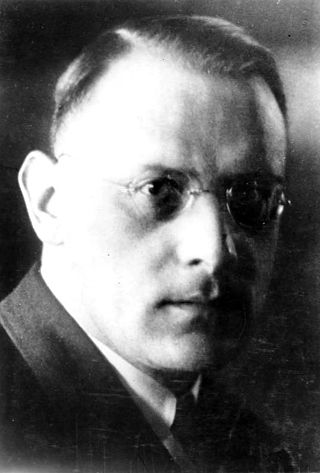
Hans Friedrich Karl Günther was a German writer, an advocate of scientific racism and a eugenicist in the Weimar Republic and the Third Reich. He was also known as "Rassengünther" or "Rassenpapst". He is considered to have been a major influence on Nazi racialist thought.
Gabrielle Houbre is a French historian. She is a lecturer at the University of Paris VII: Denis Diderot and a member of the Institut Universitaire de France. Specializing in 19th century history, she pursues research of gender, history of sexuality, the body, sensitivities, and youth.
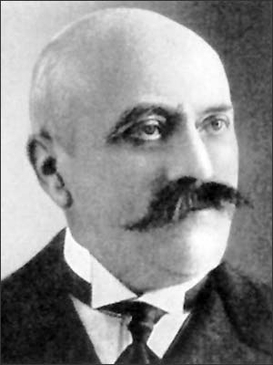
Count Georges Vacher de Lapouge was a French anthropologist and a theoretician of eugenics and scientific racism. He is known as the founder of anthroposociology, the anthropological and sociological study of race as a means of establishing the superiority of certain peoples.
Joseph Vogt was a German classical historian, one of the leading 20th-century experts on Roman history.
Albert Piette is a French anthropologist and a professor at the Department of Anthropology at Paris Nanterre University.
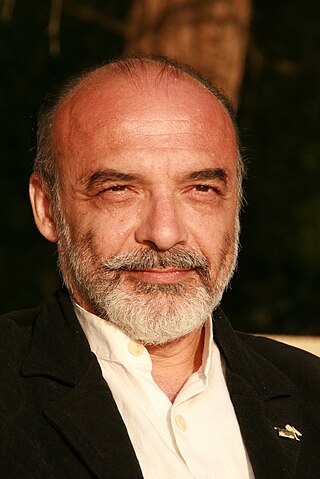
Édouard Brasey is a French novelist, essayist, scriptwriter and story-teller born on 25 March 1954. Author of more than seventy works, many of which have been translated into English, Russian, Japanese, Spanish, Portuguese and Italian. He specialises in the themes of the esoteric, fables, legends and fantasy. He won a prize of Imaginales in 2006 for La Petite Encyclopédie du Merveilleux, and a prize Merlin in 2009 for his novel La Malédiction de l'Anneau. Subsequently, he has become essentially a novelist, notably published by Calmann-Lévy. His historical-esoteric thriller that was published in 2013, Le Dernier Pape, anticipated the abdication of Benoît XVI.

René Schérer was a French philosopher and professor emeritus of the universite de Paris VIII.
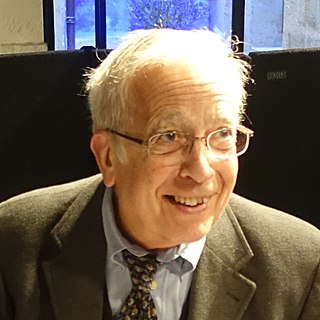
Yann Le Bohec is a French historian and epigraphist, specializing in ancient Rome, in particular North Africa during Antiquity and military history.
Bertrand Lançon is a French historian and novelist, a specialist of late Antiquity.
Alain Besançon was a French historian. He specialised in intellectual history and Russian politics. From 1965 to 1992 he was director of studies at the École des hautes études en sciences sociales in Paris. He was elected to the Académie des sciences morales et politiques of the Institut de France in 1996.

Jean Mabire was a French journalist and essayist. A neo-pagan and nordicist, Mabire is known for the regionalist and euronationalist ideas that he developed in both Europe-Action and GRECE, as well as his controversial books on the Waffen-SS.

The Law of 3 October 1940 on the status of Jews was a law enacted by Vichy France. It provided a legal definition of the expression Jewish race, which was used during the Nazi occupation for the implementation of Vichy's ideological policy of "National Revolution" comprising corporatist and antisemitic racial policies. It also listed the occupations forbidden to Jews meeting the definition. The law was signed by Marshall Philippe Pétain and the main members of his government.

Christian-Georges Schwentzel, born in 1967, is a French historian specializing in the Hellenistic East.
The Nordic Indo-Germanic people is a mythological group, from which the Germanic peoples allegedly descended. The assumption of the existence of this primordial people was developed by nationalists in the German territories from the early 19th century onwards, and was the subject of intense research in both the 19th and 20th centuries. Nineteenth-century German philologists, ethnologists and historians initially focused their research on the Eastern origins of Germanic populations. Then, in a second phase, these researchers changed the focus of their work to demonstrate the Nordic origin of Germanic populations and civilization. These results were soon deliberately exploited in the debate on German identity that raged throughout the nineteenth century.
Renordification refers to the racial policy implemented by the Third Reich to counter the denordification of Germans, the main branch of the Nordic Indo-Germanic people.
References
- 1 2 Chapoutot, Johann (2008). Le nazisme et l'Antiquité (in French). Paris: Presses Universitaires de France. p. 463. ISBN 978-2-13-060899-8.
- ↑ Chapoutot, Johann (2006). La Charrue et l'Épée: Paysan-soldat, esclavage et colonisation nazie à l'Est (1941-1945) (in French). Paris: Hypothèses 2006. pp. 11–12. ISBN 978-2-85944578-2.
- 1 2 Chapoutot, Johann (2008). Le nazisme et l'Antiquité (in French). Paris: Presses Universitaires de France. p. 449. ISBN 978-2-13-060899-8.
- ↑ Conte, Édouard; Essner, Cornelia (1995). La Quête de la race: Une anthropologie du nazisme (in French). Paris: Hachette. pp. 83–84. ISBN 978-2-01-017992-1.
- ↑ Chapoutot, Johann (2008). Le nazisme et l'Antiquité (in French). Paris: Presses Universitaires de France. p. 499. ISBN 978-2-13-060899-8.
- ↑ Chapoutot, Johann (2008). Le nazisme et l'Antiquité (in French). Paris: Presses Universitaires de France. pp. 523–524. ISBN 978-2-13-060899-8.
- 1 2 Chapoutot, Johann (2008). Le nazisme et l'Antiquité (in French). Paris: Presses Universitaires de France. pp. 498–501. ISBN 978-2-13-060899-8.
- ↑ Conte, Édouard; Essner, Cornelia (1995). La Quête de la race: Une anthropologie du nazisme (in French). Paris: Hachette. p. 77. ISBN 978-2-01-017992-1.
- ↑ Chapoutot, Johann (2014). La loi du sang: Penser et agir en nazi (in French). Paris: Gallimard. p. 133. ISBN 978-2-07-014193-7.
- ↑ Chapoutot, Johann (2014). La loi du sang: Penser et agir en nazi (in French). 2014: Gallimard. pp. 130–131. ISBN 978-2-07-014193-7.
{{cite book}}: CS1 maint: location (link) - ↑ Labbé, Morgane (1997). La statistique raciale: une impasse scientifique et sa "solution" politique sous le IIIe Reich (in French). Vol. 29 (1st ed.). Paris: Génèses. p. 36. doi:10.3406/genes.1997.1477.
- ↑ Conte, Édouard; Essner, Cornelia (1995). La Quête de la race: Une anthropologie du nazisme (in French). Paris: Hachette. pp. 82–83. ISBN 978-2-01-017992-1.
- ↑ Conte, Édouard; Essner, Cornelia (1995). La Quête de la race: Une anthropologie du nazisme (in French). Paris: Hachette. p. 71. ISBN 978-2-01-017992-1.
- 1 2 Conte, Édouard; Essner, Cornelia (1995). La Quête de la race: Une anthropologie du nazisme (in French). Paris: Hachette. p. 74. ISBN 978-2-01-017992-1.
- ↑ Labbé, Morgane (1997). La statistique raciale: une impasse scientifique et sa "solution" politique sous le IIIe Reich (in French). Vol. 29 (1st ed.). Paris: Génèses. p. 41. doi:10.3406/genes.1997.1477.
- ↑ Chapoutot, Johann (2014). La loi du sang: Penser et agir en nazi (in French). Paris: Gallimard. p. 435. ISBN 978-2-07-014193-7.